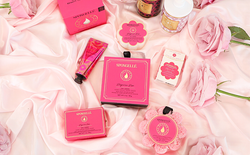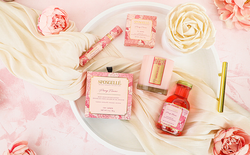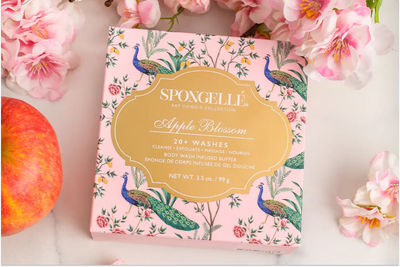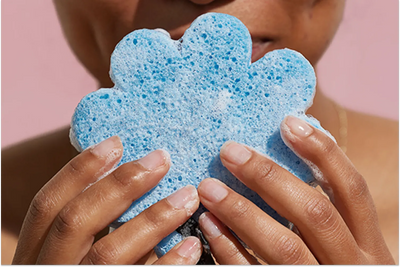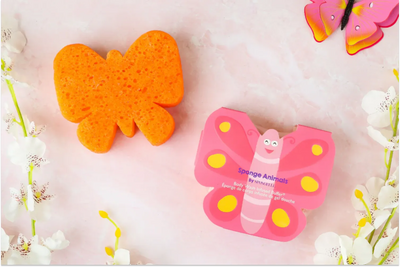Spray tans are all fun and games until you have to remove them. Once it's time to part ways, frustration can set in as you try to get rid of your sunkissed glow. Your body starts looking splotchy, and you want a quick way to achieve an even complexion.
You don't have to spend an hour in the shower scrubbing your skin raw. There are simple tips and tricks to help you remove your spray tan with ease.
Home remedies and tan removal products on the market can help you get the job done. We are going to go over everything you need to know to become spray tan free!
Why Do People Want To Remove a Spray Tan?
There are a variety of reasons you may need to remove your spray tan. The main reason is that your tan has gone through its natural life cycle.
You'll always want to remove the old spray tan before getting another one. Starting with an even complexion is crucial to achieving a flawless spray tan.
However, there are other reasons you may need to nix the bronze.
Allergic Reaction
Some people are allergic to spray tanning solutions. The main chemical in a spray tan is dihydroxyacetone (DHA). It is a type of sugar that reacts to the amino acids on your skin, which creates a pigment that makes you look tan.
DHA can come from organic sources, such as cane sugar and beets. Companies can also synthetically make it in a laboratory. Although both are safe for most people, you can have an allergic reaction to the chemical. In this case, you'll want to remove the spray tan immediately.
Over-Tanned
You can customize how dark you want your spray tan. However, if you go overboard, you can look too dark. You can remove the top layer of the spray tan for a lighter, more natural appearance.
Uneven Tan
You can end up with an uneven tan if you get water on your skin, sweat, or wear tight clothing before it fully develops. When your complexion looks splotchy and uneven, it may be time to remove the tan and start again.
How Do You Remove a Spray Tan?
There are several methods you can try when it's time to remove your spray tan. However, exfoliation is one of the main ways of getting back to your normal skin tone.
Below, discover everything you need to know about exfoliating.
Physical Exfoliants
Physical exfoliants are scrubs, loofahs, gloves, brushes, and buffers. These tools help you remove the top layer of dead skin cells. It's important to find one that's abrasive enough to exfoliate but gentle enough to avoid skin irritation.
One popular physical exfoliant is a shower buffer. Spongellé's buffers come infused with a luxurious body wash to help you exfoliate and clean all at once.
Chemical exfoliants
There are also chemical exfoliants that can help you remove your tan. These products use acids or enzymes to dissolve dead skin cells and spray tan. They may contain alpha-hydroxy acids (AHAs) like glycolic and lactic acid.
Chemical options can be gentler than some physical exfoliants. If you have sensitive skin, you should take precautions when it comes to chemical or physical exfoliants. You don't want to scrub too aggressively or use chemicals that may be too harsh for your skin.
Do a patch test before using a chemical exfoliant to see how your skin reacts.
How To Exfoliate
Prepare your skin for exfoliating by sitting in a sauna, showering, or bathing. The steam will help soften your skin, making it easier to remove the top layer. You won't need to use a harsh chemical exfoliator or scrub your skin vigorously.
Use your exfoliator of choice by applying it to your skin. If you're using a physical exfoliant, like gloves or a buffer, make small circular motions over your body. Focus on the areas where your spray tan is the most stubborn.
Next, rinse off and see if any areas still need attention. Remember not to exfoliate too much because you can end up with red, irritated skin.
What Are DIY Tan Removal Solutions?
You can make your own exfoliator at home if you don't have a physical or chemical option. You likely already have the supplies you need in your kitchen.
Blend Lemon Juice and Baking Soda
A powerful natural exfoliator is a mixture of lemon juice and baking soda. Lemons have high levels of citric acid and high pH. The baking soda is mildly abrasive, which also helps remove your spray tan.
Combine the juice and baking soda until you have a paste consistency. Use the mixture to scrub your body, then let it sit on your skin for several minutes. The lemon juice will help break down the spray tan and dead skin cells.
Mix Baby Oil and Baking Soda
Another at-home exfoliator is a combination of baby oil and baking soda. This mixture is a good option if lemon juice irritates your skin. The oil will soften your skin and break down the DHA in the spray tan.
Scrub the mixture over your body and watch the color begin to fade. After allowing it to sit for five minutes, use your body buffer or washcloth to remove the oil and tan.
Use Dish Soap
Try using dish soap if your skin isn't overly sensitive. Dish soap can not only cut through grime and grease but can also get rid of your spray tan. However, dish soap can be very drying on the skin. It's especially important to moisturize after replenishing your skin.
Try a Vinegar Rinse
Apple cider vinegar and plain white vinegar may also help remove your tan. Create a mixture of equal parts water and vinegar in a spray bottle. Spray it over your body and let it sit for a few minutes before rinsing it off with cold water.
Are There Specialized Tan Removal Products?
You can skip the at-home remedies and go right to a specialized product for removing a spray tan. These products break down the chemicals in spray tan solutions. You’ll be able to easily wipe away pigment.
There are various types of tan removal products that work in different ways. A foaming cleanser is made to work in the shower. The foaming product allows you to gently remove the spray tan. You apply the product all over your body and allow it to sit for several minutes before wiping it off.
Another type of spray tan remover is a spray-on option. The product combines glycolic acid, micellar water, and oil. You spritz it all over your body and allow it to soak in for several minutes. Next, rinse off in the shower and watch your tan wash away.
There are also tan removal gels. These products are very hydrating and work best with tans at least three to four days old. You apply it to dry skin and allow it to sit for five minutes before wiping it off with a washcloth.
The effectiveness of these products will vary, depending on your skin type, the quality of the spray tan solution, and how long it's been on your skin. These products can be a lifesaver if you need to get your spray tan off in a hurry.
Try to choose a high-quality product, and follow the instructions carefully. You may want to do a test patch to ensure you don't have a bad reaction.
How Can I Make My Spray Tan Removal Easier?
You can take specific steps to avoid a difficult spray tan removal. These steps will make it easier to take off and keep it looking good while it's on.
- Pre-tan Preparation: It all begins before your spray tan is even applied. Exfoliate your body to remove stubborn dead skin, oil, and dirt on the surface of your skin. The spray tan can get stuck in these impurities, making it look uneven and harder to remove.
- Tan Maintenance: Proper skin care will help keep your tan looking fresh and prevent it from becoming difficult to remove. After three days, your tan will begin to fade in certain areas. Lightly exfoliate your body to even out your complexion. Taking off the top layer of the tan will make it easier to remove later.
- Moisturizing: Moisturizing is an essential step to prevent difficult tan removal. Spray tan solution can get stuck in dry skin and make it harder to remove. Use a high-quality moisturizer, like a Spongellé lotion, after showering or bathing to keep your skin hydrated and healthy.
Final Thoughts
You don't have to be nervous about removing your spray tan. Various tools, at-home remedies, and products are available to help you get the job done. Taking care of your skin before and after your appointment will also make it easier to take off.
Spongellé can help you buff away your tan and replenish your skin.
Sources
Self-tan sensitivity: could you have a fake tan allergy? | Allergy Clinic London
How to Use Glycolic Acid in Your Skin Care | VeryWell Health


